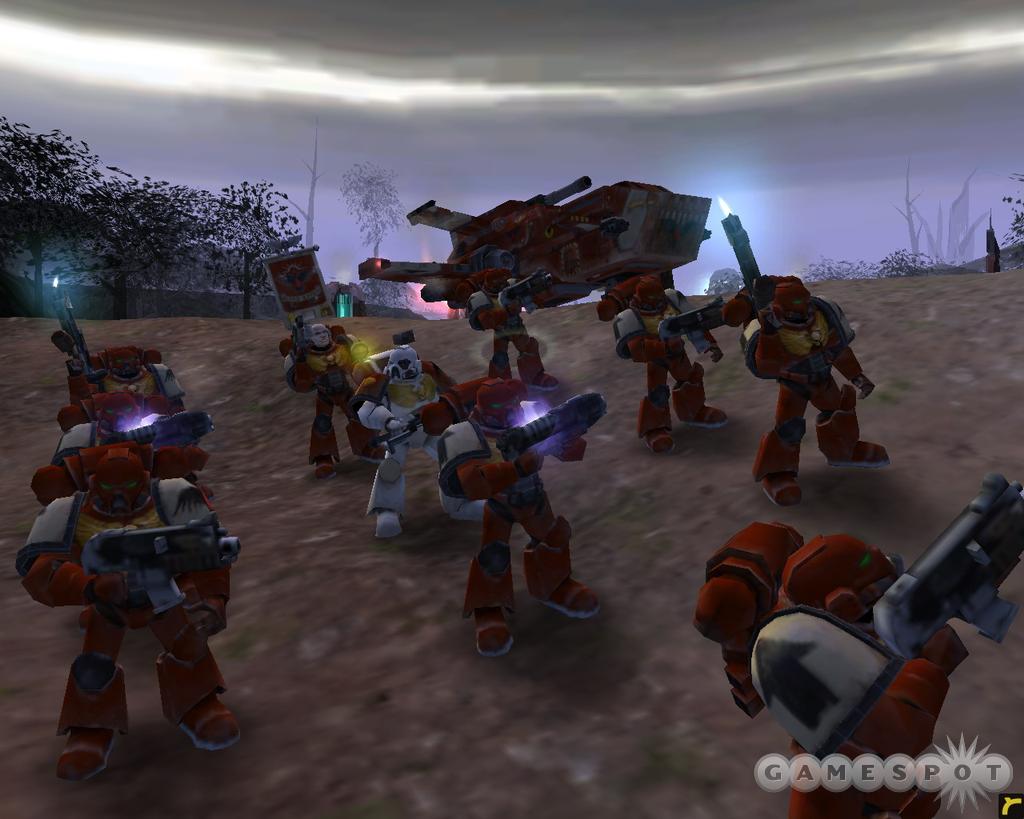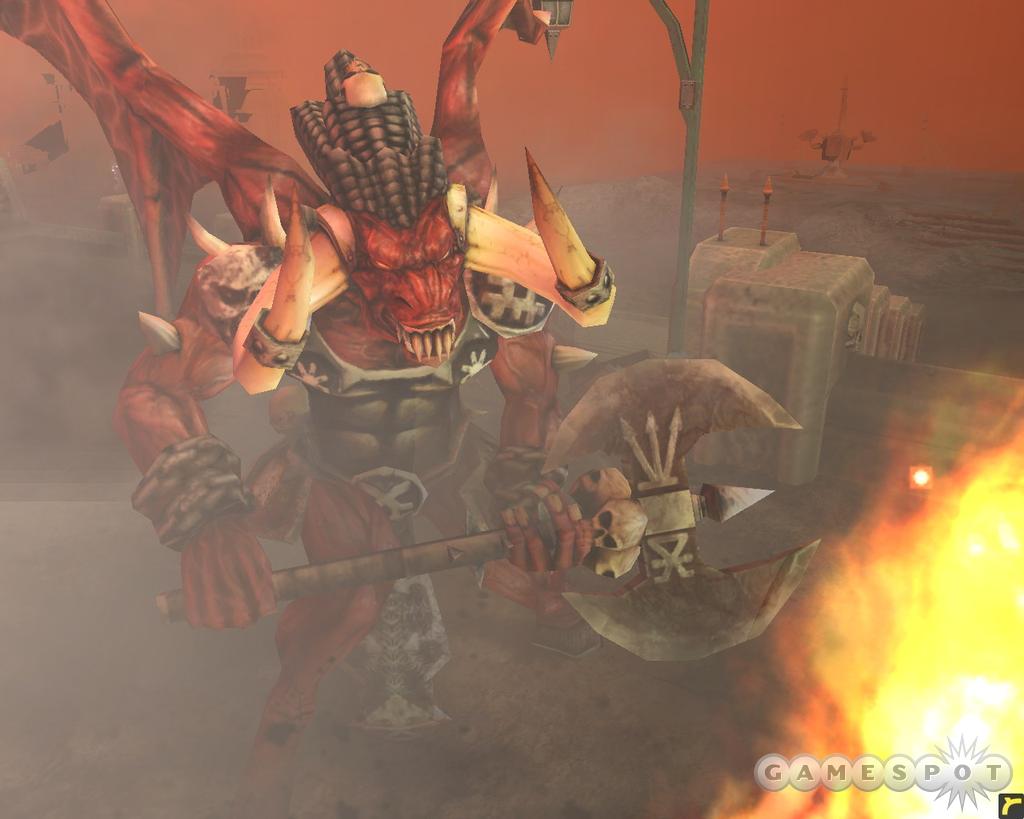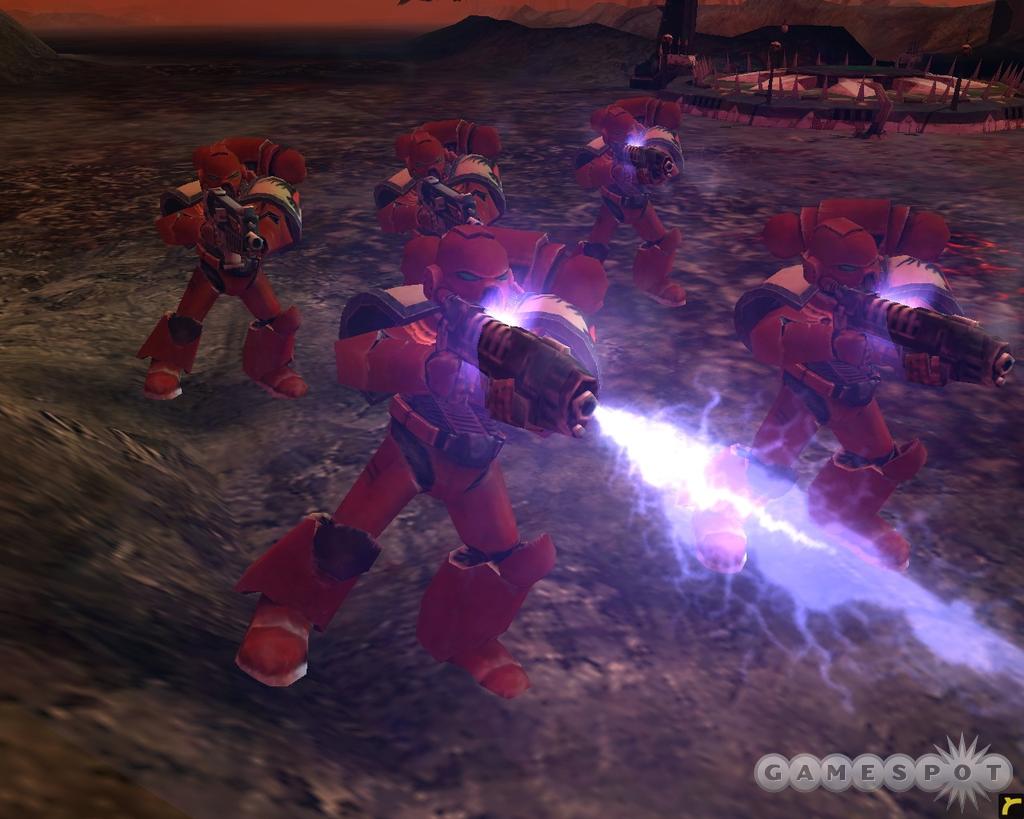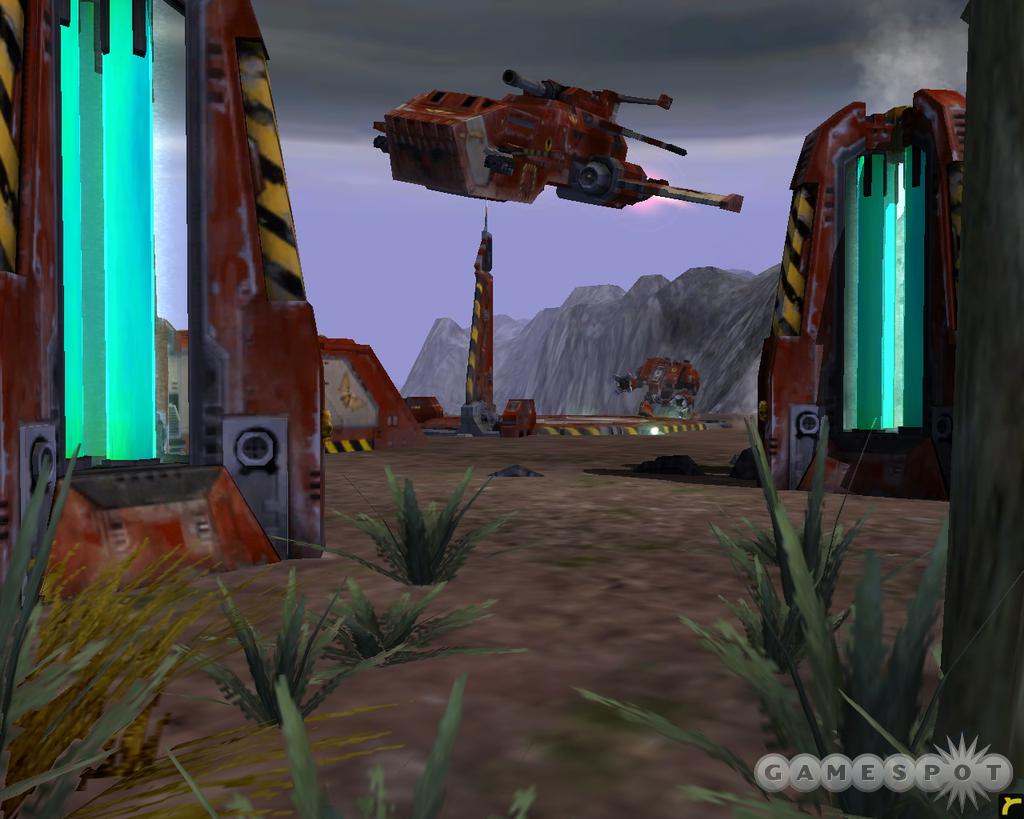Warhammer 40,000: Dawn of War Impressions
The intense battles of the Warhammer 40,000 universe will come to life in all their gory detail in this promising real-time strategy game.
Despite its name, Warhammer 40,000: Dawn of War is not the first Warhammer 40,000-based game. Indeed, over the years, there have been a number of strategy and action games based on the popular miniatures tabletop game by Games Workshop. However, it's safe to say that none of them have looked as good, or as promising, as Dawn of War. Publisher THQ has turned the reins of this new real-time strategy game over to Relic Entertainment, which has a history of developing acclaimed and innovative RTS games. And as a result, it looks like we'll get a game that captures the visceral look and feel of the Warhammer 40,000 universe.

If you're unfamiliar with the tabletop game, Warhammer 40,000 is set in the distant future, with numerous races locked in mortal combat in worlds across the galaxy. Battles in Warhammer tend to be large and bloody (it's not unusual to see a tabletop game with dozens, or even hundreds, of units going at each other), as the various races outfit their troops with a mix of powerful armor, such as melee, projectile, and explosive weapons. Dawn of War will attempt to bring that miniatures game to life, though it's important to note that it will not incorporate any of the tabletop rules. While Games Workshop required Relic to maintain strict adherence to the look of all the units and vehicles, it gave Relic free rein to design a real-time strategy game around Warhammer 40,000.
The developers at Relic, many of whom are huge Warhammer fans, wanted to make an RTS game that featured the intense frontline combat of the tabletop game. So one of the first things they did was take the graphics engine built for an earlier game, Impossible Creatures, and begin modifying it so they could capture the gory details of combat. Everything is being rendered in proper scale, and the engine has been enhanced so that it can render large numbers of units on the screen at once and also allow you to zoom in to an incredible degree in order to see the action up close and personal. Not only can you see facial expressions and fingers gripping weapons, but a sharp eye will spot a five o'clock shadow on some of the human faces. More importantly, you'll also get a real sense of actual melee combat. A space marine will plunge his energy swords into the chest of an ork (the Warhammer version of traditional fantasy orcs), then plant his boot on the body to work the sword free. Or the ork killa kans, a sort of a walking tank, will grip a space marine in one claw, raise him into the air, and then use the attached saw in the other arm to slice him in half (with an appropriate splattering of blood). Size is another factor that's being taken into account; each individual soldier will be aware of the size of his opponents. So a 40-foot-tall eldar avatar will look down on his opponents, impale one on his huge sword, and then fling the body away, while his opponents look up and fire at him.
Beneath the pretty graphics and effects, Dawn of War should feature a fast-paced strategy game, faster than what you're probably familiar with. Relic wants to speed up real-time strategy; in most games, you spend 10 to 15 minutes simply building your base before you venture out in force. Dawn of War is being designed to force you to make contact with the enemy in the first two to three minutes. Spread across the level will be strategic points, usually located at crossroads, bridges, and choke points on the map. If your forces secure a strategic point and plant a flag there, it will increase your accrual rate of requisition points, which are used to purchase new units. The number of strategic points you control will also affect the number of units you can have. Naturally, the more strategic points you can secure as early as possible, the better, so this should force you to send out infantry immediately to grab as many points as possible and then defend them from attack. Requisition points are one of the two resources in the game, the other being energy, which is generated by the buildings you construct. Base-building in the Warhammer universe is unique; rather than construct bases in a traditional sense, each race has a special method of setting up shop. For example, space marines drop their buildings from orbit; they'll crash into the earth, and servitors, basically engineers, will set them up.

In order to cut down on micromanagement, infantry are automatically grouped into squads; the basic space marine squad will consist of two to four marines. Part of the strategy in Dawn of War deals with the fact that you can reinforce these squads adding up to six more space marines, or maybe attaching different units too a squad, such as a commander who will increase the squad's effectiveness and morale. You can also research new weapons and upgrade the weapons to tailor a squad, such as missile and rocket launchers for antitank capability. The AI is smart enough to organize the squad so that the powerful, yet vulnerable, rocket launcher marines will line up in the back, with the rest of the squad in front. The squad system will also allow you to throw dozens of troops into the fray while only controlling a handful of squads. This will be especially important to those playing the ork race, as the orks rely on mass. An ork squad can max out at 16, which makes for a green wave of infantry to overwhelm your opponent.
Break Point
Though it will be a fast-paced game, there's a considerable amount of depth being built into Dawn of War, and it's being integrated in a way so that it makes sense and doesn't require a lot of micromanagement. For instance, the concept of cover will play an important role in the game. When your troops are in a depression, crater, or burned-out building, a small shield icon will appear over them, signifying that they have cover. They'll receive less damage and inflict more on the enemy, but they won't be able to move as quickly. There's also such a thing as negative cover. In those cases, your troops are on an exposed rise or running down a road; they'll move quicker, but they'll actually be more vulnerable than normal to enemy fire. Morale will also play an important role in the game--a squad can and will break if it takes heavy losses. In the case of a broken squad, the survivors won't flee, but they'll be far less combat effective than a regular squad. The broken squad will also take more damage and inflect less damage upon the enemy. This will set up situations where you can decide to pull a squad back to reinforce it and allow it to regroup or decide to use the squad as a "meat shield" and sacrifice it in order to buy a few more valuable seconds.

While there are many different races in the Warhammer 40,000 universe, Dawn of War will focus on four of the most popular: space marines, chaos space marines, orks, and the eldar, a mystical, ancient race. You can play as any of the races in multiplayer, but the game's single-player campaign will be playable only from the perspective of the space marines. The campaign takes place on the world Tartarus, which is primarily a jungle planet with cities and settlements dotting the landscape. The space marines are tasked with repelling an ork invasion, though the other two races will make appearances during the campaign. While the campaign is only 11 missions long, each individual mission will be quite large and will serve more like a chapter in the game's story, which is expected to run about 15 hours.
A lot of focus is being put into Dawn of War's multiplayer, and it should ship with a deeper-than-normal set of features. The game will support up to eight players in a variety of team-based and free-for-all-style games. There are default win conditions or customizable games where you can set your own rules. In addition to a built-in server browser, the game will also feature persistent data storage and will keep track of statistics. The ranking system will keep track of your win/loss record, as well as the win/loss record of your opponents, and rank you appropriately. A matchmaking system will evaluate your record and set you up with a comparable opponent, if you choose. But the multiplayer feature that should appeal to diehard Warhammer fans is the army painter; you can create color schemes, badges, and banners for your units, and they'll all show up online. It's the equivalent of painting your own Warhammer figurines in the real world.

It's safe to say that Dawn of War looks good, even at this stage in the development. The graphics engine will incorporate a lot of fancy hardware terms, like fully dynamic lighting and shadowing, but it's also being designed to run well on lower-end hardware, though it will automatically lower some of the detail settings to run on those machines. We're told that the game's minimum specifications right now are geared at a 1.4GHz processor, 256MB of RAM, and a 32MB video card with hardware transform and lighting and that the game should play smoothly on that hardware. THQ recently launched an open multiplayer beta test of the game, and the company is in the final phases of development. A lot of polishing and bug fixing needs to be done, but if all goes as well as planned, we should see Dawn of War appear in stores by late September.
Got a news tip or want to contact us directly? Email news@gamespot.com
Join the conversation